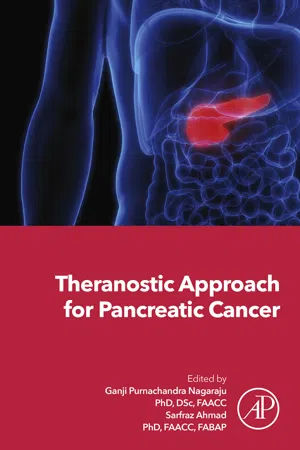List of abbreviations
APC Adenomatous polyposis coli
ARK AMPK related kinase
BRCA Breast cancer type 1
CA19-9 Carbohydrate antigen
CDCP1 CUB domain contained protein 1
CDH1 Epithelial or E-cadherin
CDKN2A Cyclin dependent kinase inhibitor 2A
DHSA Dihydrosanguinarine
DNMT DNA methyltransferase
DPC4 Deleted in PC
ECM Extracellular matrix protein
EMT Epithelial mesenchymal transition
FAMMM Familial atypical multiple mole melanoma syndrome
FOXC1 Forkhead box C1
GNAS Guanine nucleotide binding protein
GSK3β Glycogen synthase kinase 3β
HDAC Histone deacetylase
HES Hair enhance of split family
HP Hereditary pancreatitis
IGF Insulin growth factor
IPMN Intraductal papillary mucinous neoplasma
LEF Lymphoid enhancing factor
LITAF Lipopolysaccharide induced tumor necrosis-α factor
LRP5 Lipoprotein receptor related protein
MCN Mucinous cystic neoplasm
MGMT Methylguanine methyl transferase
MiRNA MicroRNA
MMP Matrix metalloproteinases
MUC Mucin
NICD Notch intracellular domain
NOX NAD(P)H oxidase
PCSC Pancreatic cancer stem cells
PDAC Pancreatic ductal adenocarcinoma
PDX Patient-derived xenografts
PSC Pancreatic stellate cells
RARβ Retinoic acid receptor β
RB Retinoblastoma
SEER Surveillance, Epidemiology and End Results
SHH Sonic Hedgehog
SIRT Sirtuin
SPARC Secreted protein acidic and rich in cysteine
TCF T-cell factor
TGF-β Transforming growth factor-β
TME Tumor microenvironment
THOR TERT hypermethylated oncologic region
UPSM Ultra–pH sensitive micelles
Introduction
Pancreatic cancer (PC) is a lethal aggressive disease with high mortality rates. It represents the fourth most frequent cause of cancer-related deaths. It will soon be ranked as the second most malignant cancer worldwide, with an overall survival rate of 26% for 1 year, 8.5% for 5 years in advanced stages of the disease, and 22% for early-stage detection with surgical resection of the tumor. Statistical analysis for PC globally estimates 1,000,000 new cases with 65,000 deaths annually [1]. According to reports from the National Cancer Institute Surveillance, Epidemiology and End Result Program, estimated new cases in 2018 were 55,440, with 44,330 deaths. The diagnosis of PC in later stages, its high inherent resistance against conventional chemotherapy, the lack of biomarkers, and insufficient treatment options result in its poor prognosis. Clinical and epidemiological studies demonstrated that early detection of neoplastic precursors and early diagnosis are effective means to regulate cancer-related mortality. Hence, the detection of pancreatic precursor lesions including mucinous cystic neoplasm (MCN), macroscopic intraductal papillary mucinous neoplasma (IPMN), and microscopic pancreatic intraepithelial neoplasia, could reduce the incidence and mortality rate of PC patients [2,3] and has been successfully tested in individuals with a strong family history of PC by imaging and surgical techniques [4–6]. PC progresses in a multistep fashion involving the transformation of healthy cells into malignant ones. This mass of malignant cells is a heterogeneous complex of tumor cells consisting of endothelial cells, immune cells, and stromal and hematopoietic cells driven by genetic alterations [7]. The most common risk factors identified include the onset of diabetes mellitus (DM), hereditary and recent pancreatitis, smoking, obesity, age, and hereditary PC, which are responsible for developing 50%–60% of PCs, whereas 5%–10% is due to genetic mutations in certain genes such as Kristen rat sarcoma (Kras). In addition to genetic mutations, epigenetic aberrations of oncogenes and silencing of tumor suppressor genes such as p16, TP53, and cyclin-dependent kinase inhibitor 2A (CDKN2A) are risk hallmarks of PC. The most common form of PC is pancreatic ductal adenocarcinoma (PDAC), which represents about 90% of PC cases. Novel therapeutic routes targeting epigenetics, modulators, and regulators of oncogenes and tumor suppressors are emerging, although molecular and pathological insights into the fatal cancer entity remain essential to improve early detection of the disease, survival time, and quality of life. This chapter highlights the epidemiology, biology, and histopathology of PC, providing an entity of tumor for therapeutic approaches to develop the survival rate and provide a better prognosis.
Epidemiology of pancreatic cancer
The asymptomatic nature of PC restricts its diagnoses to only its advanced stage with a poor prognosis. Thus, it is essential to improve methods to detect precursors at earlier stages. Furthermore, knowing and understanding the disease epidemiology could be important for primary prevention, allowing the elucidation and identification of etiology risk factors including environmental and genetical factors associated with PC. The epidemiology of PC generally measures the accurate difference of incidence and mortality rates, in which the incidence rate is the new cases and the mortality rate is the number of deaths occurring annually in a specified group. In 1999, Parkin et al. first obtained a data bank for a incidence and mortality rate from 23 areas around the world, comparing registries of cancer. They arrived at the conclusion that PC ranked ninth as the most common cause of cancer-related mortality, with 168,000 calculated deaths and the 13th cause of death in both sexes [8]. GLOBOCAN is Windows-based software that uses International Agency for Research on Cancer data to estimate the incidence and mortality rate by country. In the 2012, GLOBOCAN estimated that there were 338,000 new cases and 331,000 deaths, and thus that PC ranked seventh for mortality in both sexes [9]. It was further estimated that PC ranked 14th for new cases in 2018, with very low variations seen in males and females, but that it ranked seventh for cancer-related morality worldwide and caused 330,000 deaths per year [9]. The incidence and mortality rate are always identical because of the high fatality of disease. The incidence and mortality rates of PC calculated were higher in developed countries; they ranked second in France, fourth in the United States (North America was 7.4 per 100,000), sixth in Europe (6.8 per 100,000), and lower in countries such as Africa (2 per 100,000) and Asia (3.2 per 100,000). However, it was more commonly notic...
